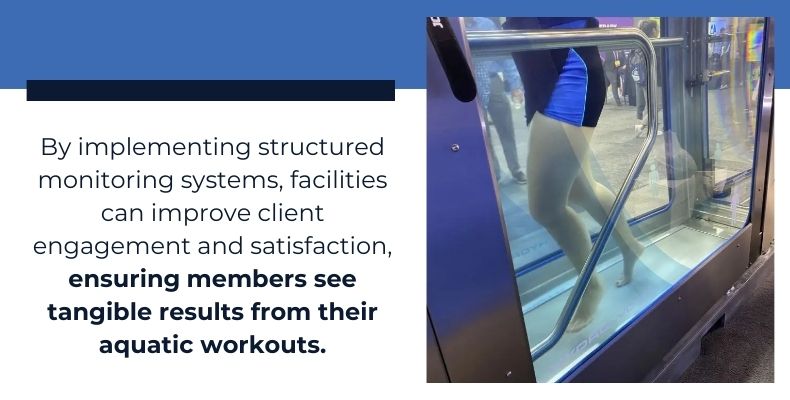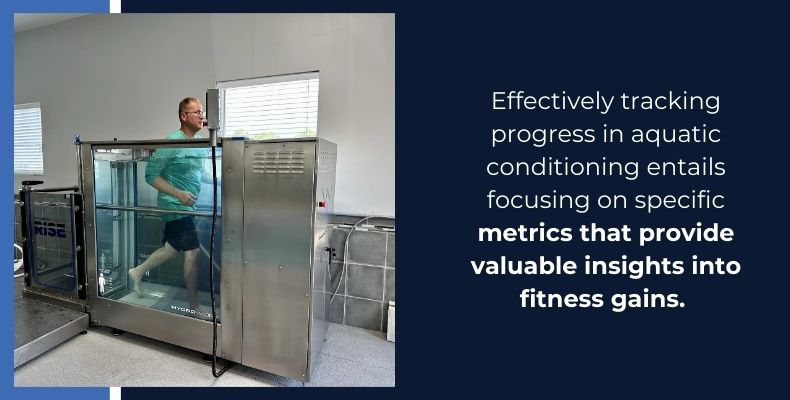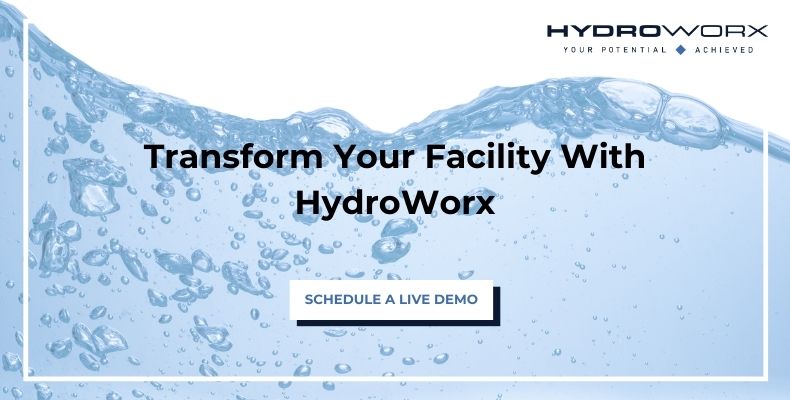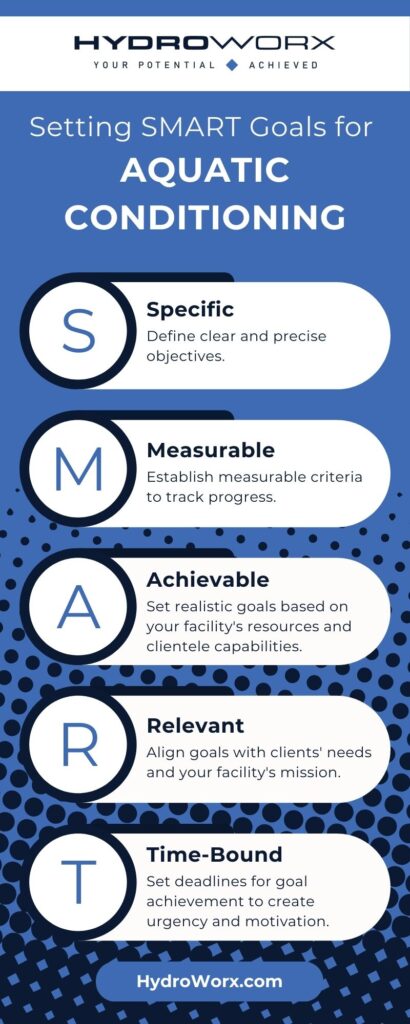Monitoring Progress in Aquatic Conditioning: Metrics for Tracking Fitness Gains
Monitoring progress in aquatic conditioning is essential for facilities looking to enhance their fitness programs and maximize the benefits provided to their clients. As the demand for low-impact, effective exercise options grows, incorporating an innovative approach to tracking fitness gains can help facilities stand out in a competitive market. HydroWorx specializes in high-quality aquatic conditioning equipment, enabling facilities to offer tailored programs that effectively address the diverse needs of their clientele.
By implementing structured monitoring systems, facilities can improve client engagement and satisfaction, ensuring members see tangible results from their aquatic workouts. Different metrics can help track performance improvements in strength, endurance, and flexibility, offering valuable insights into the effectiveness of the conditioning programs offered. This article will explore essential components of aquatic conditioning, highlight key metrics for tracking progress, and emphasize the importance of setting achievable goals, ultimately empowering facilities to provide top-notch aquatic services that meet their clients’ needs.

Aquatic Conditioning Basics
Aquatic conditioning refers to a structured exercise regimen conducted in water, focusing on improving various aspects of physical fitness while taking advantage of the unique properties of water. The buoyancy of water reduces the impact on joints, making it an ideal environment for people of all ages, including seniors and those recovering from injuries. Here are some key benefits and aspects of aquatic conditioning:
- Low-Impact Exercise: Water supports body weight, decreasing strain on joints and minimizing the risk of injury, allowing participants to engage in exercise longer and with greater intensity.
- Enhanced Resistance Training: Water provides natural resistance, enabling individuals to strengthen muscles while performing various movements, leading to improved muscle tone and endurance.
- Improved Cardiovascular Health: Aquatic conditioning can elevate heart rates and lung capacity, enhancing overall cardiovascular fitness through fluid movements and continuous engagement.
Incorporating aquatic conditioning into a fitness routine can lead to effective weight management, improved flexibility, enhanced muscle strength, and a greater sense of overall well-being, making it a popular choice for individuals seeking a non-traditional yet impactful way to stay fit.

Key Metrics for Tracking Progress
Effectively tracking progress in aquatic conditioning entails focusing on specific metrics that provide valuable insights into fitness gains. These metrics allow individuals to assess improvements and make necessary adjustments to their workout regimens. Some essential metrics to monitor include:
- Cardiovascular Endurance: Measuring how long one can sustain activity in the water or tracking heart rate during exercises provides insights into cardiovascular improvements over time.
- Strength Assessments: Evaluating muscle strength through exercises such as resistance training, where individuals perform movements against water resistance, can reveal gains in muscle power and endurance.
- Flexibility Measurements: Regularly assessing flexibility through specific stretches and movements showcases improvements over time, indicating an enhanced range of motion and reduced stiffness.
- Weight and Body Composition: Monitoring changes in weight and body composition, such as fat loss and muscle gain, provides a comprehensive view of overall fitness progress.
By systematically tracking these metrics, individuals can gain a deeper understanding of their aquatic conditioning journeys, empowering them to set informed goals and continue progressing toward their fitness aspirations.

Utilizing Aquatic Fitness Assessments
Aquatic fitness assessments play a crucial role in monitoring progress, as they provide measurable data on various components of fitness. Implementing regular assessments allows individuals to evaluate their strengths and identify areas requiring improvement. Here are some valuable assessments to consider:
- Timed Swim Tests: Conducting timed swims over a set distance helps gauge endurance levels and improvements in swimming technique. Regular testing can provide motivation to enhance speed and distance.
- Strength Assessments: Utilizing equipment such as resistance bands or water weights can facilitate assessments aimed at measuring upper- and lower-body strength. Tracking repetitions and endurance during resistance exercises reveals strength improvements.
- Functional Movement Screenings: Using a series of movement patterns in the water can assist in identifying mobility issues and evaluating overall agility and flexibility. This screening is particularly beneficial for seniors and those with physical limitations.
- Heart Rate Monitoring: Wearing a heart rate monitor during workouts enables participants to track their heart rate variability, lending insights into cardiovascular conditioning and recovery times.
Incorporating these assessments into aquatic conditioning programs not only aids in monitoring progress but also lends a sense of accountability, encouraging individuals to remain committed to their fitness goals.
Setting Realistic Goals and Benchmarks
Setting realistic goals and benchmarks is critical for success in aquatic conditioning, as it provides measurable and achievable targets that can keep individuals motivated. Goals should be tailored to each person’s fitness level and health objectives while being specific, measurable, achievable, relevant, and time-bound (SMART). Here’s how to set effective goals:
- Identify Specific Objectives: Determine what you want to achieve with your aquatic conditioning program, such as improving cardiovascular endurance, increasing strength, or enhancing flexibility.
- Break Goals Into Smaller Milestones: Divide larger goals into smaller, manageable benchmarks that can be tracked regularly, providing a sense of achievement and encouragement along the way.
- Utilize Data From Assessments: Leverage data gathered from assessments to create benchmarks reflective of your current fitness levels, ensuring that goals are within reach and based on concrete metrics.
- Revisit and Adjust Goals: Regularly evaluate your progress and adjust goals as needed to accommodate changing fitness levels, ensuring that your objectives remain challenging yet attainable.
By setting realistic goals and benchmarks, individuals can maintain motivation throughout their aquatic conditioning journeys, celebrating milestones that lead to ongoing fitness improvement and personal growth.

Elevate Your Aquatic Conditioning Programs With HydroWorx
Transform your facility’s aquatic conditioning offerings with HydroWorx’s state-of-the-art equipment. Our innovative hydrotherapy pools and tools are designed to enhance the effectiveness of your fitness programs, allowing clients to achieve their goals while benefiting from low-impact workouts. By integrating our advanced technology into your facility, you can track progress effectively and provide personalized aquatic conditioning experiences that empower your clients. Don’t miss the opportunity to stand out in the fitness industry—contact HydroWorx today to learn more about our solutions and how they can elevate your aquatic programs to the next level!

